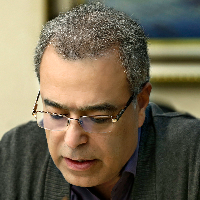Evaluation of the Locating of New Towns of Tehran's Urban Area by Using of Multi- Variables Evaluation Method
Author(s):
Abstract:
Locating of new towns is one of the main factors in determining the success or failure of new towns in accessing their pre- planned objectives, and also one of the main challenges that new towns’ planners are faced with. This issue with regard to the stability of new towns in the past decade and the possibility of studing the results made by their establishment patterns, can provide an effective framework for planners in the future planning. So, this paper tries to evaluate location of new towns around Tehran as one of the samples generalized to the other cities in the country. Therefore, with respect to the accepted and desirable criteria for assessing the location capacities and their establishment distances in relation with the main city of Tehran, the possibility of analyzing distance variable on desirable function of these towns is calculated and considered. In this regard, firstly, by utilizing the world literature and emphasis on previous experiences, assessing indexes were determined and then evaluated by using quantitative analysis methods such as AHP and TOPSIS. The performed assessments and obtained results showed that in terms of accessing the proper criteria of locating new towns in the Tehran’s cities; ‘Parand’ new town with. 597 score is the most successful and ‘Pardis’ new town with. 381 score is the weakest, this issue in addition to the distance, is due to other general conditions of locating including proper access, environmental conditions and neighboring with urban markets.
Keywords:
Language:
Persian
Published:
Geography and Development Iranian Journal, Volume:12 Issue: 36, 2014
Pages:
109 to 122
https://magiran.com/p1327038
مقالات دیگری از این نویسنده (گان)
-
Thinking space, Considerations about spatial regulations and spatiality of policies
Ahmad Yazdanian, Mohamadreza Pourjafar *,
Arid regions Geographic Studies, -
Evaluating Energy Efficiency in Urban Rules and Regulations with an Emphasis on Zoning Model (Case Study: District 6 of Tehran City)
*, Asareh Rashidi, Maryam Farahani
Journal of Geography and Urban Space Development,



